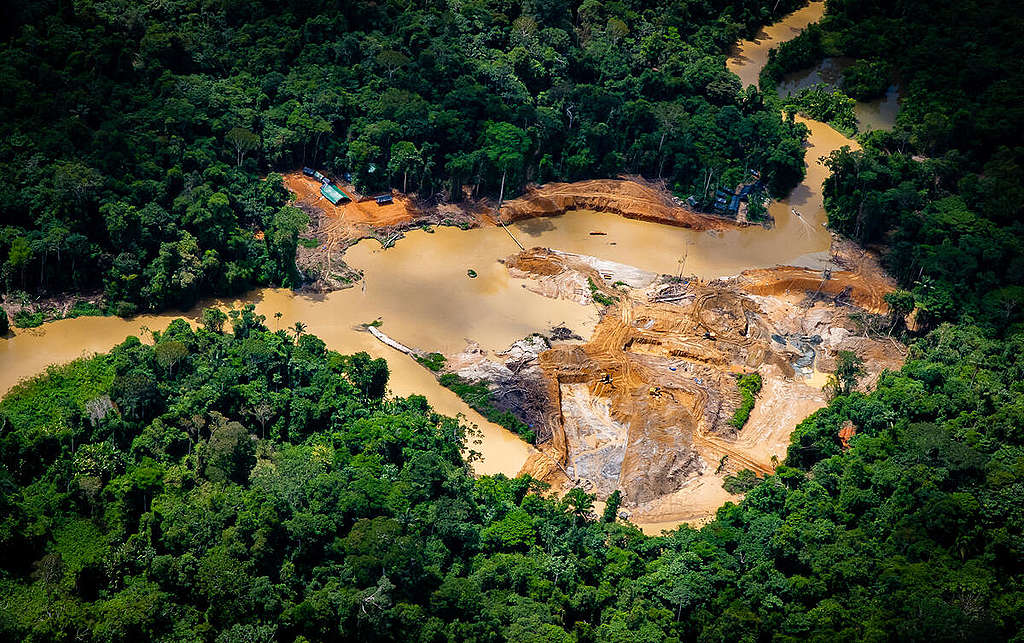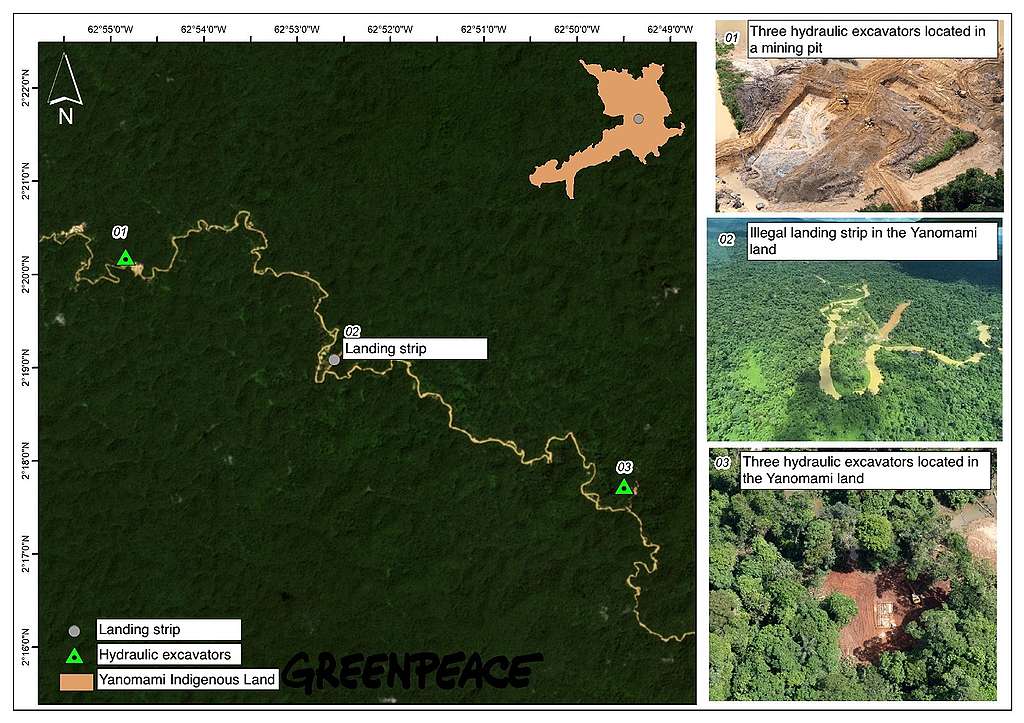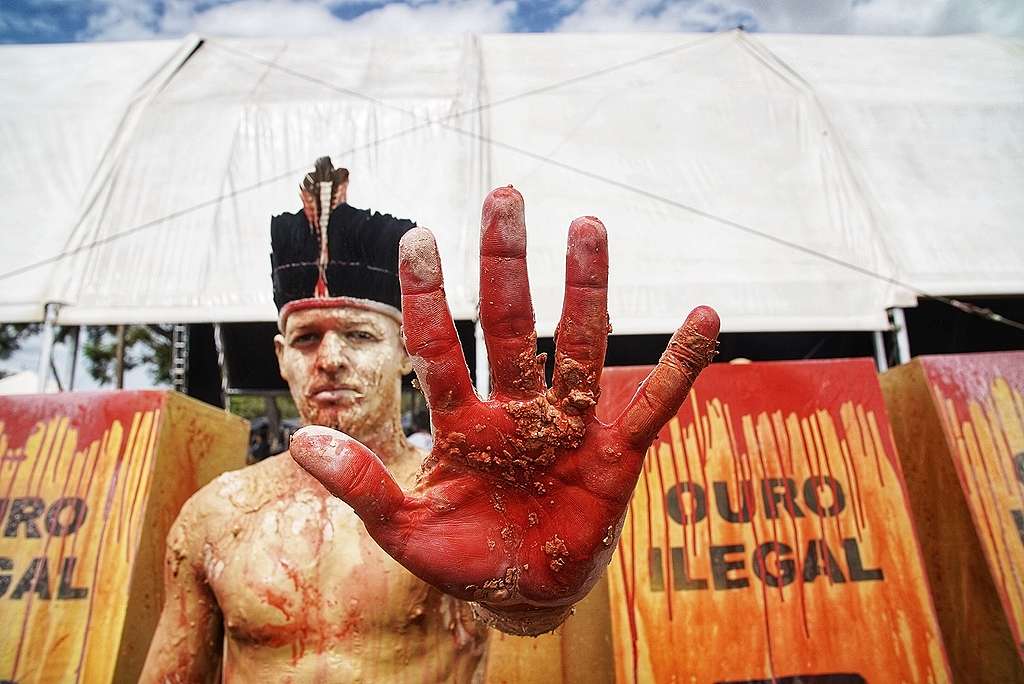The Yanomami Land is the largest Indigenous territory in Brazil. It is located in the northern part of the country, on the border of Venezuela and over 20 thousand Indigenous People live in it. However, another 20 thousand people are also living inside the Yanomami territory: illegal miners. Polluting rivers, destroying the forest and threatening the very existence of an ancestral People, the explosion in illegal mining in the region has caused a humanitarian crisis that is making the news all over the world.
Illegal mining in Indigenous Lands in Brazil has a devastating impact not only to the environment but also to the health and lives of those living in those lands.The use of mercury in the activity poisons the land the Indigenous People use to plant their food and the rivers they use to fish. By poisoning the water, mercury also gets into the People’s bodies, causing serious health problems, and even death.

Besides that, the presence of the miners in the Indigenous territory exposes those living there to other diseases. An explosion in cases of malaria and malnutrition, due to the lack of access to food and traditional ways of production in the Yanomami land has been a serious threat to the lives of the Indigenous People, especially children. 11,530 confirmed cases of malaria were recorded in 2022 alone.
What we are seeing in the Yanomami territory is outrageous, but, unfortunately, it is not a surprise. Illegal mining has been an old enemy of the Yanomami People since the 1970s, but due to the pro-mining discourse and the actions from the Bolsonaro government, the activity has expanded in a devastating way. According to data collected by the Hutukara Yanomami organization, between 2019 and 2021, the area illegally mined in the Yanomami Land increased by a whopping 1,963% compared to the previous ten years, leaving a trail of destruction and death.

In December 2022, a flyover carried out by Greenpeace Brazil registered the expansion of a 150-kilometre illegal road within the Yanomami territory. The access to the mining pits within the Indigenous land to bring supplies to the miners can only be done by plane, so the road would enable the activity to pose an even greater threat, facilitating the access of heavy machinery that would be even more destructive.
The change in government has brought a new hope to the Indigenous People’s crisis in Brazil. So far, the Lula government has signalled commitment in reverting the dire situation that was established during the past administration. The creation of the Ministry of Indigenous Peoples and the appointment of Sônia Guajajara, a renowned leader in the country, are historical milestones and show that the new president is dedicated to respect the rights of Indigenous Peoples and traditional communities in Brazil.

But beyond the medical emergency declared by the government to act on the Yanomami People crisis, change must be done at systemic level to remove the 20 thousand illegal miners that have taken over the Yanomami land and other Indigenous lands and prevent further destruction in their territories. Only with a combination of protective policies will we have any chance of constituting a new economic order capable of coexisting with the forest and guaranteeing the fundamental rights of the more than 28 million Brazilians who inhabit the Amazon.
